Episode 51 Show Notes
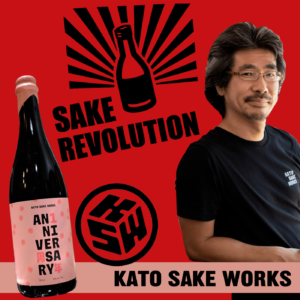 Season 1. Episode 51. This week we meet up with another U.S. sake brewer – Shinobu Kato. Shinobu was born in Tokyo, Japan and came to the States for school and stayed on for work. After discovering a passion for sake brewing, he left corporate America to make a go at working full-time in fermentation and opened up Kato Sake Works in March 2020. Just as Shinobu was getting his Bushwick, Brooklyn micro-brewery off the ground, cue the pandemic. Despite the challenges of 2020, Shinobu hung in there and with the support of sake-curious Bushwick locals, he toughed out a tough year. Right now, he’s celebrating a hard-earned year of success at Kato Sake Works by releasing a fabulous, limited and very special anniversary sake the Kato Sake Works Shizuku Junmai. Shizuku is a rare style of sake that uses the least invasive pressing method – gravity alone does all the work. Join us as John and Timothy sit down with Shinobu to talk about brewing sake in Brooklyn, his fabulous Shizuku sake and why it always pays to leave the door open for the neighborhood dogs. Happy one year anniversary to Kato Sake Works! Kanpai!
Season 1. Episode 51. This week we meet up with another U.S. sake brewer – Shinobu Kato. Shinobu was born in Tokyo, Japan and came to the States for school and stayed on for work. After discovering a passion for sake brewing, he left corporate America to make a go at working full-time in fermentation and opened up Kato Sake Works in March 2020. Just as Shinobu was getting his Bushwick, Brooklyn micro-brewery off the ground, cue the pandemic. Despite the challenges of 2020, Shinobu hung in there and with the support of sake-curious Bushwick locals, he toughed out a tough year. Right now, he’s celebrating a hard-earned year of success at Kato Sake Works by releasing a fabulous, limited and very special anniversary sake the Kato Sake Works Shizuku Junmai. Shizuku is a rare style of sake that uses the least invasive pressing method – gravity alone does all the work. Join us as John and Timothy sit down with Shinobu to talk about brewing sake in Brooklyn, his fabulous Shizuku sake and why it always pays to leave the door open for the neighborhood dogs. Happy one year anniversary to Kato Sake Works! Kanpai!
Skip to: 00:19 Hosts Welcome and Introduction
Welcome to the show from John and Timothy
Skip to: 01:12 Kato Sake Works Shinobu Kato Introduction
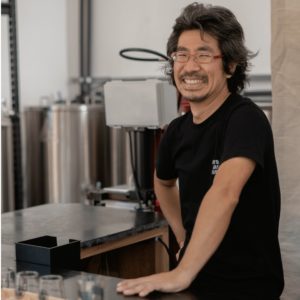
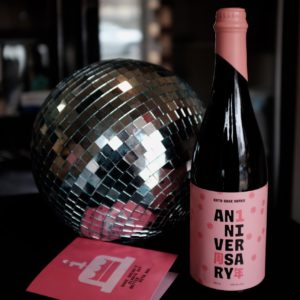
About Shinobu and Kato Sake Works
Shinobu was born and raised in Koenji, a small but culturally rich and dynamic neighborhood in Tokyo, Japan. It was there that he tried sake for the first time. Throughout the years, Shinobu expanded his palate and experienced plenty more sake varieties, both good and bad, especially during his college days and thereafter, when he worked for the fast-growing internet venture, Softbank. It was while working crazy hours, even by Japanese standards, that Shinobu learned the joy that a perfectly selected sake can bring to a busy day.
In 2004, Shinobu came to the US to attend the Robert H. Smith School of Business at the University of Maryland. This was where he learned about business and, outside of the classroom, the culture around American drinking. Upon graduation, he took a position at Nissan in Nashville, Tennessee, where he led a team of software engineers to deliver global projects. At a big company with a sizable IT budget, Shinobu enjoyed implementing solutions to large business problems, including an exciting two-year assignment to India.
Eventually, overtaken by his passion for sake, Shinobu left the corporate world and moved to NYC to start a sake brewery in 2016. He currently lives in the Bushwick community in Brooklyn, which reminds him of his hometown, Koenji. His wife, Ayako, lives in Seattle but visits whenever it rains there. (Update: Ayako finally moved to NYC in December 2019, after Shinobu found her a great Seahawks bar near the brewery.) When he’s not brewing sake, Shinobu enjoys cooking, DIY’ing, and writing code. Backpacking and road trips are his favorite ways to relax between making batches of sake.
Skip to: 14:14 About the brewery
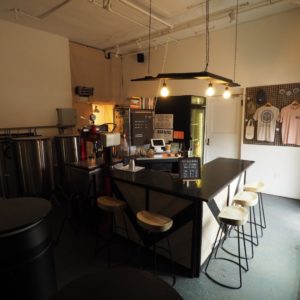
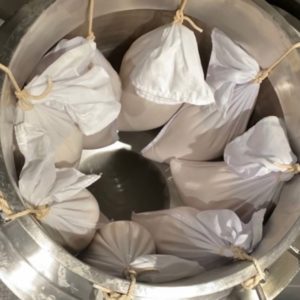
Skip to: 16:43 Sake Tasting: Kato Sake Works Junmai Shizuku
Kato Sake Works Junmai Shizuku
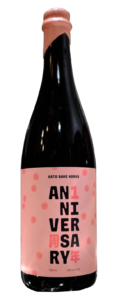
Rice: Calrose
Brewery: Kato Sake Works
Rice Polishing: 60%
Pressing Style: Shizuku (drip method)
ABV: 16.0%
Classification: Junmai
Shop KatoSakeWorks.com (shipping within New York State)
Skip to: 24:43 Other Kato Sake Works sakes
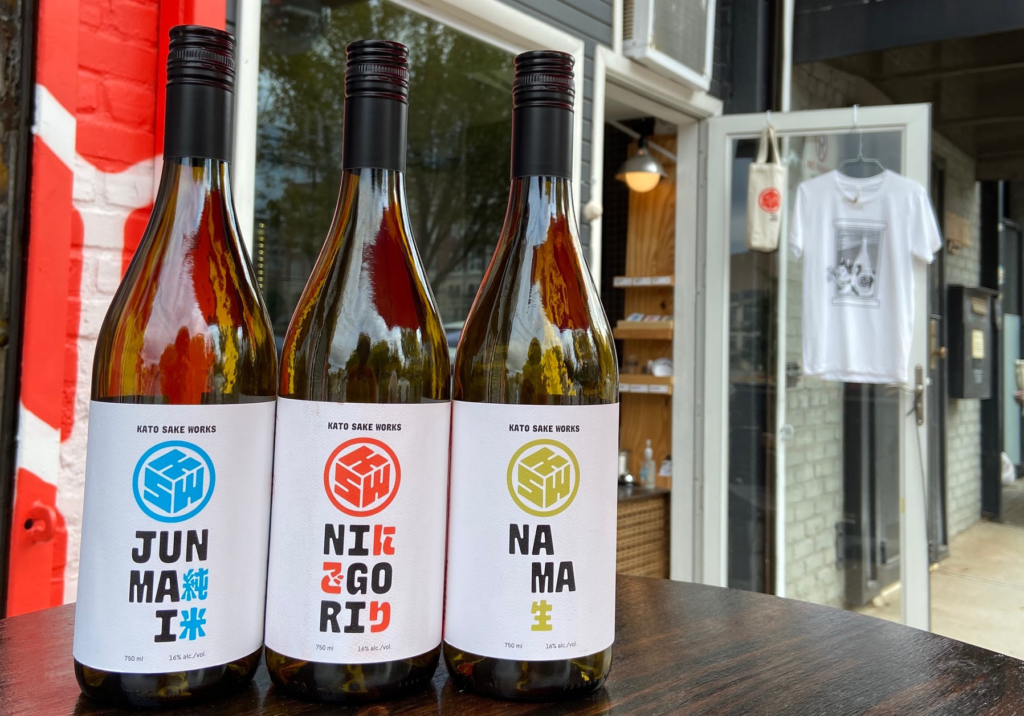
Skip to: 31:36 Show Closing
This is it! Join us next time for another episode of Sake Revolution!
Episode 51 Transcript
John Puma: 0:21
Hello everybody, and welcome to Sake Revolution. This is America’s first a podcast. I am your host, John Puma from the Sake Notes. The administrator over at the internet sake discord as well as the Reddit r/sake community. And the guy on the show who is not a sake samurai.
Timothy Sullivan: 0:39
And I am your host, Timothy Sullivan. I am the sake samurai. I’m also a sake educator, as well as the founder of the Urban Sake website. And every week, John and I will be tasting and chatting about all things, sake and doing our best to make it fun and easy to understand.
John Puma: 0:58
Fantastic, Tim, you know, what’s fun.
Timothy Sullivan: 1:01
well, my favorite time of the year is my birthday. What about you?
John Puma: 1:04
Uh, birthdays are great. Christmas is also good, but we’re going to go with birthdays today because, uh, in a way, our guest today is celebrating a birthday of sorts.
Timothy Sullivan: 1:14
Oh, that’s great. Uh, who is it?
John Puma: 1:18
It is Shinobu Kato of Kato Sake Works, who’s brewery here, in Brooklyn, New York is celebrating their one year anniversary.
Timothy Sullivan: 1:28
Oh, I thought you were going to tell me Shinobu finally turned 21 and can, drink legally now.
John Puma: 1:34
I mean, I don’t think I ever stopped him, but,
Timothy Sullivan: 1:40
Fantastic. Well, let’s welcome. One of our local New York city sake brewers to the show. Welcome Shinobu, Kato. Thank you for joining us.
John Puma: 1:55
yeah.
Timothy Sullivan: 1:56
So can you tell us briefly how you got started with sake? Tell us a little bit for our listeners who don’t know you. What’s a little bit of your journey from, uh, coming from Japan to opening a sake brewery in Bushwick, Brooklyn. How did you get started?
Shinobu Kato: 2:12
Sure. So, you know, my sake career, or as a devoted drinker started way before 21, you know, in Japan legal age is, lower than 21. But anyway, so I, I enjoyed drinking sake, uh, you know, bad one, good one cheap and expensive one. And, uh, I moved to the U S uh, 2004, all for different reasons. I, I went to the business school and then also got a job in Tennessee. So I was there for like 10 years, I always liked sake, but once I moved to the U S it’s hard for me to get a good sake that I used to drink back in Tokyo. And, uh, to me, sake was more like like that. You know, it’s a good drink. I enjoyed that. But also at the same time, it’s very approachable, accessible. Oh, something like, your beer or wine here. And, it’s been hard for me to find a good sake, the equivalent to your like local craft beer, or like a local winery. So always I had a problem every time. Like I have a party, I cooked something like a really casual Japanese stuff and, threw a party, but I didn’t have anything to pair with. So I ended up. serving craft brewery’s IPA, or local wineries wine or something like that. And then that would be my shame. So that’s how I started making my own. Like I started making my own miso, making some other stuff and then sake was one of the things that okay. If I don’t have, maybe I can try and then first batch, I threw a big party for the pressing. We call it like a pressing party and then. And it was good. It’s not something that I probably would sell to you, but at least it was good. You know, anything handmade is good. Right. That, that kind of good. And then, I enjoyed doing that. I continued making batch after batch and the people started asking me like, Hey, Shinobu. I didn’t like sake before, but this is the first time I truly enjoy drinking sake, now I go through those Japanese restaurant. I can order some stuff and then enjoy it, by the way I’m having our dinner parties and my parents, can I buy a bottle? That kind of conversation happened. Several times. And then that’s when I started to realize that, Hey, I’ve been complaining about the situation as a problem, but I might have a solution. So, this might be your kind of thing that can help the situation. Oh. And then that’s, that’s how I started into sake.
John Puma: 5:01
That’s great. So you’ve had your brewery open now for a year over in Bushwick. And have you found that your brewery has been increasing the local interest in sake?, is there anything that you guys do over there that kind of helps people helps the locals, discover it and have those kinds of aha moments? So the ones that everybody’s like, Oh, wait a minute. sake, can do this.
Shinobu Kato: 5:24
That’s what I’m hoping, I think like the typical customers that we have in Bushwick, they probably never been to Sakagura, probably they’ve been to Decibel once, they. Like sake because it’s cool, but they don’t know much about sake. That’s a kind of a crowd that we are attracting at the brewery and they make a typical conversation. He’s like, Hey, I know you are open. And, and I’m very curious what you have, but I don’t know much about sake and I I’m like, okay, you don’t need to know much about sake. I’ll give you some samples. So try it. And if you liked it, that’s great. If you don’t, walk away. And that’s how we kind of, uh, start the conversation. Oh. So hopefully I’m making that kind of ah-ha moment, more in Bushwick, maybe you need to randomly interview on the people on the street in Hey what do you think about sake
John Puma: 6:19
When I visited the brewery, I’ve been there when people have come by and have had the samples and, they always have that look on their face. Like, Oh, they’re always very happy. And they always, that was always really nice to see. And that’s. I think one of the things that we like to say is that the biggest challenge is getting people to try sake and having people walk by and see the brewery and be like, Oh, what’s this all about? Oh, sake. Hmm. I don’t know about that. And then having you pour them a couple of samples, like, all right, now they have been able to try it and now they can make a decision and then they can see if there’s something that they want to pursue more, which I think is pretty cool.
Timothy Sullivan: 6:54
but I think that running a sake brewery, that’s open to the public. Like you, do you have people walking in off the street? I really view you as someone who’s on the front lines. Of introducing sake to Americans. And you never know who’s going to walk through that door of your brewery. In your opinion, based on the customers who come in and talk to you, what do you think is the biggest misconception or biggest problem with American consumers right now about their attitude, about sake? What is the biggest stumbling block for people that you’ve come across when they come in and talk to you about sake?
Shinobu Kato: 7:34
I don’t, I think it’s just an opportunity they are curious. They are very much want to try if there’s a moment, but that moment never happened to their lives. That’s my guess. So every time I talk to the people on the street, they want to try and once they try it, they like it. So there’s no misconception. There’s no, you know, any bad years, but just that they didn’t have a chance to walk in front of sake, Yeah. If you pass by, beer brewery or winery, there’s hundreds of those occasions. And then, chances are that, Hey, let’s try something. It’s a local, right. But that is not happening for sake So I did not think they have any kind of, predetermined a misconception or mis- whatever, but just that they didn’t have a chance to try something good.
Timothy Sullivan: 8:41
so, I’ve had the experience sometimes where I’m at an event and I’m pouring sake at a table and, there might be a couple and maybe one person of the couple comes up and says, Oh, I love sake. And then the spouse or partner is like folding their arms and shaking their head. Yeah. Have you had that experience where one person wants to come in your brewery and someone’s, not so into it. And have you, won anybody over to sake
Shinobu Kato: 9:06
I think I had a couple of occasions like that. Yeah. Also more often it’s more like a dog try to come into the brewery
Timothy Sullivan: 9:17
Well, it is Bushwick.
Shinobu Kato: 9:18
the dog owners are like, no, no, no, no, no, no. Don’t go in there and are we kind of overly nice to the dogs so that we can attract too And then they were like, okay, we done not sure about sake but I was like, okay, well, why don’t we think that your dog is here? Why don’t you try? And then eventually they ended up buying like two bottles that happened.
Timothy Sullivan: 9:42
That sounds like a very Brooklyn kind of situation.
John Puma: 9:47
a lot of breweries have a brewery cats. You have all of the neighborhood dogs.
Shinobu Kato: 9:52
Yeah. in front of us is a park. And then that’s not a dog park about people use that dog park. Somebody told me that their, a dog walking group, like a dog owners group, they have a group chat and then they know that we have a hot sake during winter time. So they chatted each other, like, Hey, you know, you go to Kato sake and then we’ll have a cup of hot, sake for them that happened.
John Puma: 10:16
I like that, like, you’re very like neighborhood focused in that way. Whereas like, you know, the, literally the neighborhood doll walk talk, walking group is gossiping about the sake that he can get at your place. That’s pretty cool.
Shinobu Kato: 10:26
Yes. Yes. Yes.
John Puma: 10:29
do you think that, American sake is developing kind of its own different style from what’s going on over in Japan.
Shinobu Kato: 10:39
Yeah. The things that’s not ed to the U S yet, and then there’s a lot of, you know, younger generation sake breweries in Japan, they are very innovative and creative. Right. I only see them through that, you know, internet and, and other medias, but what they are trying to do and what we are trying to do in the United States or outside of Japan, it’s not that far different. Everybody’s trying to, try to stick to the tradition and then, Push more towards, how it’s been done while at the same time, there’s much more allowing the sake making. And then there’s like, you know, bunch of opportunities of the inspiration from beer world wine world, other fermented food, everything. So that’s another area that influence. And then I think the same kind of mixture of the creativity is happening both in Japan and, uh, US.
Timothy Sullivan: 11:39
So you think like all brewers have the same goal. Like everyone just wants to make good sake. And get that out to people. So you think that’s the same in Japan and the U S
Shinobu Kato: 11:50
I personally think that if we make more sake here is better. So, brewing your sake. It’s a good thing. Also helping other potential future sake brewers that helps to increase the market does more like a bottom up. Right. So that instead of having just one neighborhood sake brewery in Bushwick, but we might have a neighborhood sake brewery in long Island city, you know, maybe not in Manhattan, that’s too expensive, but you know, something like that.
John Puma: 12:29
Tim, Tim had his hopes up for a moment there.
Shinobu Kato: 12:32
I think that helps to just increase the number of the opportunities for just the regular consumers too access to sake.
Timothy Sullivan: 12:46
that, you need to have more breweries, opening up to kind of reach a critical mass to, to have more opportunities for people to stumble on a brewery while they’re walking their dog or,
Shinobu Kato: 12:57
Yeah. Yes.
Timothy Sullivan: 12:58
driving downtown, in many cities. So you think when we have maybe some more breweries like yours opening up across the country, there’ll be more opportunity for Getting that growth going. Yeah, I think that makes sense.
John Puma: 13:12
we neglected to mention, although I guess one could put two and two together that, you’re celebrating the first anniversary of the brewery. And it’s almost the first anniversary of, or we just passed the first anniversary of when things really went into lockdown here in New York. So you’ve really been doing this whole thing, without really being able to get out there. Uh, just, just being supported mostly by the people that are local to your area. And I think that’s like really cool that, that the neighborhood is, like, you know, literally as a neighborhood supporting you. it’s a good story to hear in COVID times. Where do you wanna have something to kind of rally around?
Shinobu Kato: 13:45
Yeah, that’s really true. And then it was like, people found us people, so us opening and people, that’s, it’s not. In the best time to start the business. So everybody was so supportive, they come and then, okay, well, whatever you do, let me pay. I want to support your business, that kind of, interaction. And then without having that supportive local neighborhood, we, we’re not here.
Timothy Sullivan: 14:14
so, for those people that might not be in New York or might not have visited you yet, can you tell us a little bit about what your brewery looks like? Uh, how big it is and also, how do we reach you if we want to come and visit you in person, can you give us a little bit of impression of the lay of the land of your brewery?
Shinobu Kato: 14:32
sure. Oh, so we are located in the neighborhood called Bushwick and, uh, I’m originally from Tokyo, a part of Tokyo called Koenji. And then I kinda see Bushwick similar to Kōenji so it’s, nothing fancy, not like Manhattan or Shinjuku, but probably like 15 minutes from the city center, very residential in a way that there’s more Student artists or, like older families, they live it together with a lot of local smaller businesses, no major, big brand restaurants or shops. So that’s where we located and our brewery is small. So if you can just think of any kind of sake brewery and a slice that to half and then half, and then take like 5% that’s our brewery it’s we kind of joke that it’s a New York apartment size brewery you know, I’m a type A person. So I like to organize things. So we try to utilize that and, exploit, every single square footage that we have. Yeah, so in a way it’s a very New York i think.
Timothy Sullivan: 15:52
So what’s the closest subway stop to your, to your brewery.
Shinobu Kato: 15:55
Yeah. Morgan Avenue. Yes. And then Jefferson, along L train.
Timothy Sullivan: 16:03
the L. All right. Well, if anyone has the chance to visit Kato Sake Works in Bushwick. If you’re in the New York city area, I’m sure it’s a wonderful thing to do on the weekend. And, you’re going to see some cute dogs. I think too, if you, if you visit, if you visit at the right time,
Shinobu Kato: 16:22
Yeah, cute dogs. Murals Roberta’s Pizza. Uh, a couple of more breweries.
John Puma: 16:28
Personally, I like riding my bike over to the brewery. It’s a nice little workout. You you’re you’re you’re burning off those sake calories. Very important.
Shinobu Kato: 16:39
So we have a CitiBike, a docking station
John Puma: 16:41
There you go.
Timothy Sullivan: 16:43
All right. Shinobu now we mentioned a few times, it’s your one-year anniversary of your brewery? Congratulations. you’ve brewed up very special sake to celebrate your one-year anniversary. John and I were able to pick up a bottle and we’d love for you to walk us through a tasting of this sake and can you describe the bottle to our listeners? Because this is a very special packaging. We’re going to have a photo of this bottle in our show notes. Can you describe the packaging you prepared for this bottle and tell us about, what style of sake it is while John and I, uh, go ahead and open this up.
Shinobu Kato: 17:22
Sure. So actually we, we brewed this, uh, special sake for this podcast, but decided to name anniversary and share with, everybody else. So this is for this podcast,
Timothy Sullivan: 17:37
We’re honored.
Shinobu Kato: 17:38
yes. Yes. This is our first, shizuku sake. And, maybe, you know, your listeners are very familiar with all the sake types types, but shizuku is a different type of the pressing method. So actually it’s not pressing, it’s just dripping it. So, the typical sake pressing method is more like a French class equivalent while this one is more like a paper drip. Type of process, so no pressure put in the mash. So you get the finest drips of the sake and of course that’s very inefficient. So you get, just a fraction of the total yield by that method. So, so we did the wax seal because it looks like a drip. Right. So it’s kind of, shizuku thing. And the, because it’s a cherry blossom time the spring time we made it like a fresh pink label, and, all our logos are more like a confetti for, the celebration.. But, uh, we never capped our bottles. We he’s a crown, like a beer crown for this dipping. So it was kind of us not knowing, Hey, what to do? What, what, what, how, how do we do wax dip and then it was a big mess. It was kind of fun mess, but it was a mess.
Timothy Sullivan: 19:12
I totally get it. Now that you mentioned, because the wax drips down the side, when you do a wax seal on the top of the bottle, shizuku that drip method is, as you mentioned, it’s a pressing method where you just get what’s drips out of the bag. No pressure. And it’s one of the most. Uh, specialty styles of pressing that you can do. So it makes perfect sense. You would use that for a special occasion. Now, can you tell us about the rice milling rate and the alcohol percentage and some of the other stats about this sake as well?
Shinobu Kato: 19:49
Sure. we use the same 60% milled calrose rice, which we use for most of our sake And then, alcohol is 16% and, uh, What else do I need to tell by the way, this shizuku style or was one of my aha moment sake yeah, back being Tokyo, by then I only had like bad sake before, you know, like a college kid And then at that time, my boss was a sake connoisseur at my first job. And he was like, Hey, Shinobu, you only had bad sake. You have to know good sake. So he took me to a nice izakaya and that was shizuku sake from Kokoryu Fukui.. Yeah. Yeah. That was like a limited release bottle and a then think. One glass was like $20. It was expensive, but, thanks to Japanese seniority system. My boss paid all the bills. I didn’t have to order it. So I got a good sake. And that sakewas my kind of turning point that, Oh, I liked sake
John Puma: 21:04
Well, Tim, have you been able to to pour yours?
Timothy Sullivan: 21:08
Yes, I got my seal wax removed. I got the bottle open So I’m going to go ahead and give this birthday sake good smell. Hmm. So it’s, uh, it smells quite a bit fruity, I think. Yeah, for me, there’s also a little bit of bubblegum smell, too. Which, indicates that there might be a hint of sweetness. I don’t know if you measured the SMV on this sake or not. I haven’t tasted it yet, but my mind is saying, Oh, there might be just a hint of sweetness upfront, just based on the smell, but it has a lovely, very gentle tropical fruit aroma. It reminds me of kind of almost like a springtime aroma. There’s also for me, I dunno if you think this John or not, but almost like, that smell you get. A fresh cut grass or kind of like spring meadow smell, just a hint of something herbal too. It’s not that tropical fruit. That’s overpowering papaya or pineapple. There’s a little bit of fruitiness, a little bit of a springtime cut grass. And then I get just a hint of, uh, something sweet and fun, like a bubble gum.
John Puma: 22:29
Hmm. I definitely, definitely cannot, un-smell the bubble gum. Now that you’ve mentioned it. it’s one of those things like you have something out here in hand, you can’t quite put your finger on it. And then somebody says something and you’re like, that’s it. And that’s exactly what just happened to me.
Timothy Sullivan: 22:44
Yeah. So I’ve, I’ve had a sip and it’s not all that sweet. It’s got really good balance, but it’s very soft. The acidity seems quite low and gentle. Yeah. Really, overall like the soft John knows. I love my word pillowy. A pillowy
John Puma: 23:05
pillowy
Timothy Sullivan: 23:08
Yeah. So overall soft impression and the finish is pretty dry and clean. Would you agree with that? Shinobu
Shinobu Kato: 23:16
Yes. Yes. Yes. So I think this is the magic of the drip, press it kind of only takes a good flavors. And then leave anything kind of harsh out.
Timothy Sullivan: 23:30
Yes. Yeah. If you, if you squeeze sake too much, you can get bitter flavors. You can get sharp. Uh, alcohol and it can be really unpleasant. That’s why the very last pressings, when they’re really squeezing sake very hard, that’s not the most desirable part of the sake So when you do the no pressure, drip, this shizuku drip or trickle sake you really get the softest roundest part of the sake And I think that comes through here. The acidity seems very low, very soft and round.
John Puma: 24:05
Yeah, I’m really enjoying this as well. It is really nicely balanced. That’s really good.
Timothy Sullivan: 24:11
Yeah. Now shinobu I, that a bottle that has made using the shizuku. Or the drip method. This has to be limited supply because you can’t make, you can’t make large volumes of a sake special. So, for those listeners that maybe can’t get their hands on this bottle. We’re trying, can you tell us a little bit about the other sakes you have in your portfolio? If this one’s not available for visitors or people who see you online, what other sakes do you offer that people can try? Tell us a little bit about those.
Shinobu Kato: 24:43
Sure. So the most popular one that we have is our regular Junmai and, uh, 60% calrose, or technically it’s a Junmai ginjo, but we just call it Junmai for the simplicity sake. smooth clean, and more like all rounder to pair with anything from Japanese to non-Japanese. And then we do have a nigori sake. From the, same Calrose rice. We took the cloudy portion of the initial press and then simulate that as a nigori. So it’s a little more drier than like a typical nigori. Oh, and then less, thicker, so it’s probably like a little bit usu nigori or more like a kind of arabashiri kind of one, so that’s another popular one. And then it’s because of the creaminess. On the texture or people like to pair that with like a spicy food or something like thai, mexican. Oh. And then we do have unpasteurized Nama so much stronger, bolder, louder. Uh, flavor. And then I always tell people that this is a loud sake So you need to have this with loud America food. Yeah. Yeah. Like Roberta’s marinara pizza, uh, with like a stinky stuff on it. Um, so those are the three, regulars, and then we have Kimoto that’s, more like a little bit Wilder than our regular ones. So do, uh, uh, lactic fermentation for us. And then that’s a bit of the wild fermentation before we pitch the East. Right. So there’s a complex, funkiness, at the background a little bit, also we make Mirin, based on our sake So that’s kind of fun stuff that, you know, many people knows about mirin as a cooking sweetener. So he’s just made, drinkable mirin, just because, like, My, my wife’s mom who drinks mirin in the kitchen as a kind of while cooking. And then that’s kind of good drinking alcohol so I just wanted to make a real, drinkable Mirin
John Puma: 26:52
So, as a sake maker, do you have any kind of like dream project, something that you want to do that you haven’t gotten a chance to do yet? Obviously you’ve gone. And one of your pilot projects was a, was a Kimoto, which has now become something that is a part of your, regular offering. You’ve now made shizuku, what haven’t you tried yet? what should we expect from you in the future?
Shinobu Kato: 27:13
So always our limitation is like a space equipment, time and other stuff. And, I probably have a list of like 20 things that I want to try. Yeah. Just there’s a few things. And in 20 things, we’ve seen the boundary of the traditional sake making and then also outside of the boundary of the traditional sake making things. So as time allows we’ll continue doing that, but just to. Give some ideas, like a different type of yeast, right. different type of sake yeast, as well as non-sake yeast, right? Yeah. That’s an interesting route to go. Okay. Different type of rice, of course. But also different type of non-rice grains. Right. It’s a source of the sugar, So you can use koji’s enzymic power to saccharify any kind of grains. Right. That’s how our fermentation chefs are doing. So there’s a possibility to do that. Something other than rice, although maybe that’s not called the sake anymore,
Timothy Sullivan: 28:29
Technically not.
Shinobu Kato: 28:32
Right. So there’s a bunch of different ways to do that. And then, we did a Kimoto, there’s a different way to start motos as you know, so, traditionally, and, and also there’s a lot of inspiration from other fermented beverages as well. So that’s another route to explore
Timothy Sullivan: 28:51
so you don’t, you don’t feel constrained by the rules and regulations in Japan because they have very strict rules about the ingredients you can use and the raw materials you can use. So you’re thinking outside that box and you might make some sounds like some pretty interesting stuff in the future. Is that right?
Shinobu Kato: 29:10
Yes. Oh, at the same time, I still have. My old textbook of the sake from like, you know, hundreds of years ago. And then there’s a lot of recipes that I want to do to try, Kimoto as one that’s more popular now, but there’s a bunch of like, uh, you know, the predecessor of the Kimoto for example, that was a modern techniques. I think you can try to make it, but. Again, that’s another time and equipment constraints.
Timothy Sullivan: 29:38
Yeah, that sounds fantastic. Could you tell us for our listeners who want to learn more about your sake or maybe buy your sake or visit you in Bushwick, brooklyn? Can you tell us the best ways for people to get in touch with you and come visit you?
Shinobu Kato: 29:55
Sure. Oh, maybe you can go to our website. KatoSakeWorks.com and then also we are quite active on social media, like Instagram. So that’s how we try to update people. And then if you live nearby, just stop by. We are there. Although our business hour is Wednesday to saturday Sunday, but since we are, they are making sake every day. If you see somebody in there, just knock on the door and we’d love to talk about sake or, you know, uh, we, we love to give you some samples or talk with your dogs.
Timothy Sullivan: 30:35
so KatoSakeWorks.com. That’s probably the best way to get in touch with you now, john, I don’t know about you, but I’ve been sipping on this Kato Sake Works shizuku and I’m really, really enjoying this.
John Puma: 30:49
It has a disappearing quality I’m noticing, where it is disappearing into my mouth,
Timothy Sullivan: 30:53
So this is very soft and easy drinking. So thank you so much for sharing the sake with us.
Shinobu Kato: 31:00
You’re very welcome.
John Puma: 31:02
thank you again Shinobu., do you have any message for our listeners who are mostly sake, beginners? What would you like them to, to know about sake or about you?
Shinobu Kato: 31:11
So thank you for having me, for the podcast, John and Timothy and, uh, whoever who hasn’t been to our brewery. We are a small brewery in Bushwick and I’d love to have you over. If you have been to us, you’re part of the small community support people who made us still brewing after one year in the pandemic. So thank you so much and hope to see you again soon.
Timothy Sullivan: 31:36
That’s fantastic. I want to thank Shinobi Kato from Kato Sake works for joining us today on Sake Revolution. And of course I want to thank our listeners as well. We really do hope that you’re enjoying our show. If you would like to show your support for sake revolution, there’s one way you could really help us out. Please take a couple of minutes and if you don’t mind, leave us a written review on Apple podcasts. It’s a great way for us to get the word out about our show.
John Puma: 32:03
And after you’re done leaving your review on Apple podcasts, please go and tell a friend and then subscribe and then ask your friend to subscribe. And this way. Every week when we release a new podcast, it will show up on your device of choice without you having to do a single thing. And you will not miss a single episode.
Timothy Sullivan: 32:23
and as always to learn more about any of the topics we talked about in today’s episode or any of the sakes we tasted, please visit our website SakeRevolution.com and you can check out the detailed show notes.
John Puma: 32:34
And if you have sake questions that you need answered, do you have sake brewers that we needed to talk to? If you want to find out what kind of dogs visit Kato Sake works, please reach out to us at [email protected]. So until next time. Raise a glass gentlemen, please remember to keep drinking sake KANPAI!